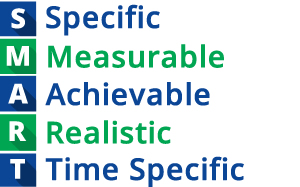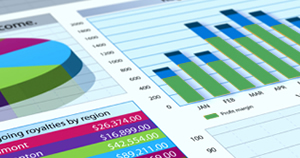Chapter 4
How?

How to use the Frameworks
1. PLAN WITH SMART OBJECTIVES:
 Just like with a PR programme, social media measurement should start with agreement on measurable objectives that are aligned with desired business outcomes. Be sure that your objectives are SMART – Specific, Measurable, Achievable, Relevant, Time-bound. Ask yourself what success would look like in each case.
Just like with a PR programme, social media measurement should start with agreement on measurable objectives that are aligned with desired business outcomes. Be sure that your objectives are SMART – Specific, Measurable, Achievable, Relevant, Time-bound. Ask yourself what success would look like in each case.
 2. SELECT A FRAMEWORK:
2. SELECT A FRAMEWORK:
Take a look at both Frameworks and choose the one that is most appropriate to your campaign or organisation.
3. POPULATE:
 Using the starter metrics menu, populate the Framework with the metrics that matter in each of the columns. Try to get a balance of metrics across the Framework, representing a broad sweep across outputs to desired outcomes. Bear in mind that not all metrics will be appropriate, and some that are appropriate might not be included in the starter metrics menu – this is not a definitive list.
Using the starter metrics menu, populate the Framework with the metrics that matter in each of the columns. Try to get a balance of metrics across the Framework, representing a broad sweep across outputs to desired outcomes. Bear in mind that not all metrics will be appropriate, and some that are appropriate might not be included in the starter metrics menu – this is not a definitive list.
4. DATA:
 Identify the data that you will need to collate. Some of the data may be available in-house, some from free/low cost tools and others from specialist providers, partners and stakeholders. Be clear on how you will collect it and where it will come from.
Identify the data that you will need to collate. Some of the data may be available in-house, some from free/low cost tools and others from specialist providers, partners and stakeholders. Be clear on how you will collect it and where it will come from.
5. MEASURE:
 Source the data and measure it in an appropriate time-frame. Depending on the situation, this may be in real time, daily, weekly, monthly or just at the end of the campaign. You choose the appropriate time-frame for your situation bearing in mind that you are likely not to just want to measure but also to glean insights to course-correct.
Source the data and measure it in an appropriate time-frame. Depending on the situation, this may be in real time, daily, weekly, monthly or just at the end of the campaign. You choose the appropriate time-frame for your situation bearing in mind that you are likely not to just want to measure but also to glean insights to course-correct.
6. REPORT:
 Tailor the style of your reports to the audience for which they are intended. Don’t feel that you have to report in the Framework documents themselves – use written reports, online dashboards, infographics, charts, video, narration, etc., as appropriate.
Tailor the style of your reports to the audience for which they are intended. Don’t feel that you have to report in the Framework documents themselves – use written reports, online dashboards, infographics, charts, video, narration, etc., as appropriate.
|
Challenge: Plot your current metrics in one of the Frameworks. Where do they cluster? Typically people find the bulk of current metrics are to the left – focussed on outputs. Try to balance this out by including metrics from all areas of the Framework. |